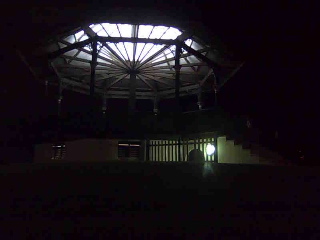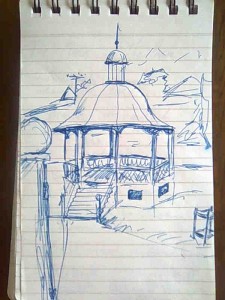I’ve been blogging a bit about Twitter recently. Here’s another great example of some good ideas sharing. Check out the video below on YouTube if you are able to. It gives some great ideas for using web 2.0 tools to structure a different type of learning environment.
piphowell@Darcy1968 Perhaps watching this video called ‘goomoodlikiog’ at http://tinyurl.com/qexm7b may inspire them to create while they have time
A tweet ! ~ 140 characters maximum..a discipline in deciding the key message and shortened URL..and the building of a sense of community: a professional learning network; one with the capacity to meet way beyond the walls of our day to day existence. Think of the possibilities when we, as a whole community, move from a paradigm of school planning to a new paradigm of planning school. It is a simple reversal of word order, but a powerful shift in engaging with community.
I was talking to a teacher the other day about setting up a Moodle for him to use for his class. The structure, which allows Categories and weekly or topic based formats lends itself well to planning a site to support a K-6 class. You can post things which are planned for the week, homework, kids can have their own blog within the Moodle, you can include chat and a database, quizzes etc etc.
The hack work is in the set up, adding users and so forth. This is easier in a network environment if it’s possible to access an LDAP server, but for a class, it’s not a huge task to create the user accounts, and a lot of fun to learn.
We’ve been running a ‘Virtual OC’ project between Tighes Hill and Biraban schools and the students are in the process of creating and uploading their second set of content around a theme based unit on Gold..’ all that glitters…”
In term 1 the kids produced ppt and podcasts. They are lashing out into video and other digital media this term. The project has been helped along by one of our Quality Teaching consultants and I’ve been having fun setting up the Moodle and finding solutions; and finding out more about Moodle. It’s another Collaborative Online Workspace, or COW ![]()
If you’d like to know more about our COWs, have a look at http://hccweb2.org
We also have capacity in our web 2.0 space to provide WordPress blogs for people wanting to have a try in the run up to the rollout of the DET blog which will come with much more seamless authentication possibilities.
A few current examples are below
http://hccweb2.org/pip/ - This is a WordPress blog running from our hccweb2 space. Pip uses it to support the outstanding presentations she has been doing around the region.
http://hccweb2.org/wpsupport/ - Using WordPress as a powerful yet simple solution for school communication.. Don’t forget, however, that the school website service is just about to roll out and looks great !
http://hccweb2.org/moodledemo/ Just a demo showing off what one of the free themes I’ve found on the web can do for Moodle.
http://hccweb2.org/oc Home of our virtual OC trial
http://hccweb2.org/hccl4l/ Another nice theme for Moodle – a place for gathering ideas for L4L
http://hccweb2.org/math/ Some of our Maths Head teachers and others are starting to get some great stuff together.
http://hccweb2.org/hcclearnsys/ Notebook resources. Notice that Moodle has the ability to render RSS feeds from other sites. This one displays feeds from Pip’s blog.
And, this site http://hccweb2.org/support/ is being put together to provide resources and ideas for all of our COWs – Collaborative Online Workspaces.
We also have a whole herd of COWs grazing in the Sharepoint environment which is hosted on a regional server and accessible to authenticated users of the DET network. Many of our consultants are now managing and growing their own COWs as a place to share resources and ideas amongst their teams and as a way of giving access to more and more schools and teachers to the great ideas and resources they have.
Please click where it says ‘Comments’ or ![]() ‘No Comments’ and provide some feedback.
‘No Comments’ and provide some feedback.
 e the park.
e the park.



Recent Comments